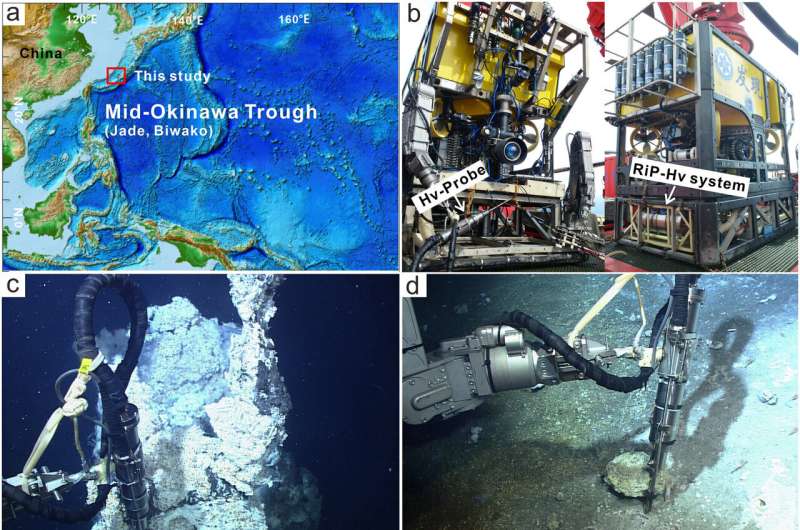This article has been reviewed according to Science X's editorial process and policies. Editors have highlighted the following attributes while ensuring the content's credibility:
fact-checked
peer-reviewed publication
trusted source
proofread
Novel in-situ pH measurement method for high-temperature hydrothermal systems

Alkaline hydrothermal systems are considered ideal environments for the origin of life because they can provide ideal ion gradient conditions for the formation of early life on Earth.
However, alkaline hydrothermal vents have only been found in the Lost City hydrothermal field in the Atlantic Ocean. Additionally, accurately obtaining the in-situ pH of high-temperature hydrothermal vent fluids is a challenge.
Recently, a research team led by Prof. Zhang Xin from the Institute of Oceanology of the Chinese Academy of Sciences (IOCAS) and their collaborators from the University of Science and Technology Beijing constructed an in-situ pH measurement method for high-temperature hydrothermal fluids based on the self-developed Raman insertion Probe (RiP) system.
They applied it to the measurement of arc-back arc (ABA) hydrothermal systems and revealed that the in-situ pH of high-temperature fluids in the sediment-host hydrothermal systems is alkaline. The study was published in Geophysical Research Letters on May 10.
The researchers used a deep-sea extreme environment simulation platform to conduct quantitative analysis of the H2S-HS- ion equilibrium system. They established Raman quantitative analysis models for H2S and HS- under high-temperature and high-pressure conditions, as well as an in-situ pH calibration model for hydrothermal fluids.
They focused on a typical hydrothermal system in a back-arc setting and conducted in-situ detection using the ROV Faxian equipped with RiP. The observations revealed that the in-situ pH value of the high-temperature vent (6.3) exceeded the pH value of neutral fluids at the same vent temperature and pressure (5.6), indicating weak alkalinity. The in-situ pH value was approximately 1.5 units higher than the measurements conducted at room temperature.
"This study confirmed that alkaline hydrothermal vents not only exist in hydrothermal areas like the Lost City, which are controlled by serpentinization reactions, but may also be widely distributed in hydrothermal areas near continental margins affected by significant sedimentation," said Li Lianfu, first author of the study.
More information: Lianfu Li et al, Direct H2S, HS− and pH Measurements of High‐Temperature Hydrothermal Vent Fluids With In Situ Raman Spectroscopy, Geophysical Research Letters (2023). DOI: 10.1029/2023GL103195
Journal information: Geophysical Research Letters
Provided by Chinese Academy of Sciences




















